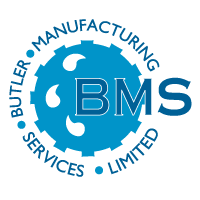Why are grease traps important for sewage treatment plants?
Importance of Grease Traps for Sewage Treatment Plants
Why Grease Traps are Essential
Grease traps, also known as FOG (Fats, Oils, and Grease) Traps, play a critical role in protecting sewage treatment plants. Excessive grease in sewage can severely impact the performan
Key Issues Caused by FOG
Impact on Biological Treatment:
Most sewage treatment systems rely on biofilms (bacteria and microorganisms) to break down organic matter.
FOG coats the biofilm, preventing access to oxygen, which is essential for microbial respiration.
This results in:
Reduced biofilm growth.
Diminished sewage treatment efficiency.
Eventual system failure.
Increased Effluent Contaminants:
Pipe Blockages and Fatbergs:
FOG accumulates in pipes, forming fatbergs that block sewage flow.
This necessitates expensive professional cleaning and increases operational costs.
Finally, if you need a sewage treatment solution for your hotel, restaurant, pub or tourist site, we have 36+ years’ experience producing effluent to the highest standards available worldwide e.g. BOD/SS < 5 mg/l, NH4 < 5 mg/l, TN < 10 mg/l & P < 1 mg/l. However, one of the first places we will start is checking what grease trapping you have in place and what maintenance is being done!
Example of a Giant Fatberg blocking a pipe
Legal and Maintenance Considerations
Regulatory Compliance:
Commercial establishments with on-site cooking are required to install and maintain properly sized grease traps to reduce FOG levels to 10 mg/l or less.
Regular inspections and emptying of grease traps are mandatory to avoid fines, closures, or other legal actions.
Shared Responsibility:
Each kitchen on a site should have its own grease trap.
Even private residences should avoid disposing of FOG down the drain to prevent pipe blockages.
Typical biofilm surface with high inlet Fats, Oil and Grease (note the grey greasy appearance with the absence of a biofilm compared to the healthy surface below)
BMS Rotor with healthy growth at large Irish Hotel after properly sized and maintained grease trap is resolved.
Consequences of Poor Grease Management
System Overload:
Without proper grease traps, sewage systems experience progressive degradation in performance.
Environmental Damage:
High FOG levels can lead to illegal discharges, harming water ecosystems.
Financial Costs:
The need for frequent repairs, professional pipe cleaning, or fines from regulatory authorities.
BMS Solutions
Properly Sized Grease Traps:
BMS manufactures static grease traps to European EN1825 Standard.
Proper sizing and maintenance dramatically improve sewage treatment performance.
Maintenance Guidance:
BMS works with clients to establish a robust maintenance regimen.
This includes regular inspection and emptying of grease traps to prevent system failures.
Avoiding Quick Fixes:
BMS advises against using heavy degreasers, enzymes, or heating elements, which often push the problem downstream, exacerbating issues in the sewage treatment plant.
Benefits of Installing Grease Traps
Improved Sewage Treatment Performance:
Substantially enhances the biofilm’s ability to process sewage.
Reduced Blockages:
Prevents fatbergs and costly pipe cleaning.
Compliance and Longevity:
Ensures adherence to legal standards while extending the lifespan of the treatment system.
Expertise in Sewage Treatment
BMS has over 37 years of experience in providing world-class sewage treatment solutions. If your site faces FOG issues, addressing these will significantly improve system performance. Contact us to ensure your grease traps and sewage treatment systems are designed for maximum efficiency and compliance.
About BMS
BMS is a quality manufacturer of package products for wastewater and stormwater treatment:
Established: 1986
Global Reach: Exported to over 50 countries.
Family Business: A third-generation company with deep expertise.
BMS Product Range
BMS provides a wide array of surface water and wastewater treatment products, including:
View the full product catalogue here
Additional Services by BMS
Free Design Service: For sewage treatment, pump stations, and surface water management.
Operation and Maintenance: Full services for existing installations, including repair, advice, and testing.
Free CPD Presentations: Available for sewage treatment and surface water management, delivered at your location.
We would be delighted to discuss any requirements you might have, and we are available to meet you at your convenience. Contact us today.
© Butler Manufacturing Services 2024.




